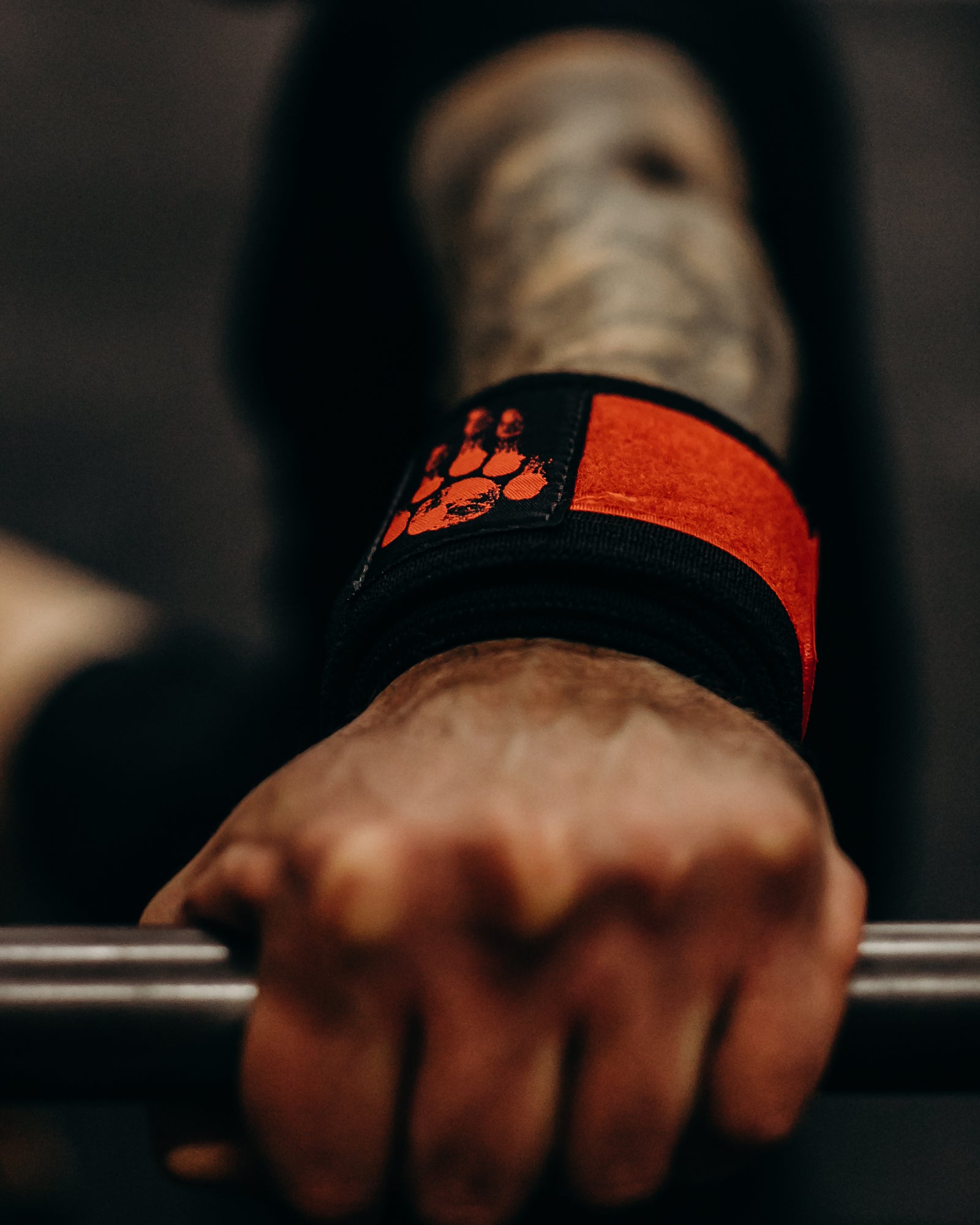The 3 Best Types of Lifts for Wrist Wraps

Wrist Wraps are all around one of the best pieces of gear to have in your gym bag for daily use but there are certain movements that will clearly benefit from Wrist Wraps and then there are others that with experience - you’ll learn make a world of a difference.
1. Pressing / Overhead Movements

Whenever you have weight overhead, there’s going to be a ton of stress on the wrists. The body has built in stabilization methods and tricks that we use as athletes, such as activating our shoulders to lock in our midline and tightening our core to support our back but there is not much you can do to really lock in your wrist with the exception of forming a tight grip and using the forearm muscles to activate the tendons of the wrists. This is where Wrist Wraps come into play. Essentially turning your whole arm into a solid structure bypassing the weak joint of the wrists so that you can keep in a good position, manage the weight overhead and drive through those movements as you knock out reps or receive the weight overhead in a more dynamic movement.
The most obvious of this group of movements is the Benchpress and Strict Press. During both these movements it is imperative to keep the wrists in a neutral position so that you can maintain control of the weight and transfer power. Any sign of instability and that weight is going to feel heavier immediately, with loss of proper muscle activation and pressing power. You would be hard pressed (yeap I put that lame pun in there) to find a competitive Powerlifter who does not use Wrist Wraps.
In the CrossFit and Weightlifting world a Snatch or Overhead Squat are two overhead movements that put a ton of stress on the Wrists. Sure, your typical Eastern European coach will tell you not to use gear and prefer you train in a cave for 10 years without sunlight but in today’s world we recognize that focusing on gaining strength and maintaining a good position with the use of proper tools is not only smart but necessary for longevity and performance. This is why all of the world record holding Weightlifters who perform at the Olympic level are almost always wearing Wrist Wraps.
More traditional Bodybuilding routines will involve movements that do not use a barbell. With a Dumbbell Press all of the same benefits of Wrist Wraps will apply, if not more than a Barbell Press. This is because unilateral movements require even more stability and balance since you are using one limb at a time and the weight is on one side of the body as a result - challenging your natural structure.
Now would be a good time to point out this is why you always want to wear Wrist Wraps on both Wrists to avoid imbalances. Supporting one wrists more than the other will lead to uneven movement patterns as one wrist is supported more than the other. This may not be noticeable at first but over time it will create problems - avoid it.
2. Gymnastic / Bodyweight Movements

Someone once said the only weight you needed to master was your own. There is no question that gymnastics athletes are some of the strongest and most impressive human performance specimens on the planet. If you take a look at their wrists - they’re always wrapped - often taped. We tried taping our wrists back in 2010 and it was not sustainable or effective but nonetheless - the point here is that a sport that depends on joint strength arguably more than many others recognizes the need for wrist support.
Movements like Handstands, Muscle Ups on the rings or barbell, Planks and even the hated CrossFit Burpee all put a lot of strain on the wrists because you’re sustaining your bodyweight on that oh so fragile joint. One small movement at the wrong time and you’ve tweaked your wrists and began the long journey of wrist injury recovery.
Often when we meet someone for the first time and speak to them about Wrist Wraps we’ll ask them to do a pushup - then hand them a pair, show them how to put the Wrist Wraps on and have them do a Pushup again. Every single time we get a surprised look on their face. The Pushup is one of the most universally known movements and also one of the most effective movements at demonstrating the effectiveness of proper Wrist Support.
3. Complex Movements

You may be asking yourself - what is a Complex Movement? In our world this means a movement that consists of multiple movements combined - often in a dynamic matter where an explosive amount of force is helpful in execution. These movements require range of motion or in other words flexibility and mobility as we like to call it today.
An example of this would be a Thruster. Notoriously hated even more so than a Burpee in CrossFit. A movement that uses a barbell starting on the floor and finishes with it overhead. Thrusters combine a Weightlifting Clean to bring the bar to your rack position while landing in a squat, a Front Squat to stand up with the bar out that Squat and then finishes after you press the bar - essentially making the final part of the movement a Overhead Press.
In this movement - there are a number of points where the Wrists are under pressure and stress. Proper stability and support will increase performance and avoid injury.
Other examples of complex movements would be both of the lifts in the sport of Weightlifting. (Notice we did not say Olympic Weightlifting, because Weightlifting is Weightlifting whether or not you are in the Olympics.) A Clean and Jerk and a Snatch. These movements are complex because there are a number of different steps, positions and transitions between them to accomplish the lift.
Regarding your Wrists these movements all have one thing in common. The Wrist will be put under loaded stress and strain in different positions while in movement. In other movements your wrists will generally stay in the same position for the course of the lift. Not in these - there will be plenty of position changes and your Wrists will need support during every one.






Leave a comment